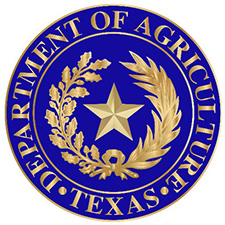Institutions Close, Farmers are left without a market
(AG Insider) The spread of the novel coronavirus has shuttered colleges, closed hospitals to visitors, and otherwise radically altered how many institutions operate. For some local farmers who have sold food to those operations’ cafeterias, it will prove difficult to recover from the lost business.
Matthew Couzens owns Horse Listeners Orchard in Ashford, Connecticut, where he grows fruit, makes cider, and operates a farm stand. A bulk of his products go to colleges and universities in the region, like Emerson College, Roger Williams University, and University of Massachusetts-Amherst. Now, with those campuses all but closed down, his customer base has evaporated.
“The customers are gone. They’re all home,” he says of students who dined at the university cafeterias. “So, we’re dead in our tracks … I’m scrambling. I don’t have any outlets.”
Many universities and colleges have increased their use of local and regional food in recent years, in part due to student demand for more sustainably-produced cafeteria options. Other institutions, like hospitals or school districts, have also tried to build their relationships with local producers.
According to the USDA, school districts spent almost $790 million on local food for school meals in the 2013-14 school year, a more than 100-percent increase from two years prior.
In an attempt to slow the spread of the virus, many colleges have sent students home, school districts have shifted to distance learning, and hospitals have restricted access to visitors. As a result, these institutions are buying less from regional producers. And for farmers who sell significant amounts of produce and dairy, finding another buyer can be difficult.
“We were processing 10 to 14,000 pounds of milk a week,” says Steve O’Brien, who runs Baker Brook Farm in Windham, Maine. But since local colleges like Colby and Bowdoin sent the majority of students home for the remainder of the semester, his sales have dropped below 50 pounds a week. “I have pretty much gone to nothing for income,” he says.
O’Brien is trying to diversify his sales by starting a partnership with the local high school, and he has beef and hay operations that can keep some money coming in. But he says he’s already had to lay off one member of his small staff and cut another’s hours.
The pandemic has created anomalous conditions in the world of institutional purchasing, which is typically a stable source of income for producers. “Institutions are really reliable customers,” says Peter Allison, the executive director of Farm to Institution New England. “Now we’re seeing this very [unprecedented] situation where they’re closing down. It’s a totally new picture, and rapidly changing.”
Some institutions are still buying from local producers, like colleges with some students still on campus or hospitals who may have restricted visitors but still have staff and patients to feed.
Yet those institutions’ cafeteria managers and food buyers are confronted with a difficult situation as they try to keep smaller suppliers afloat. Andy Cox, the director of dining services at Smith College, says he’s looking at a “significant drop” in his buying from local farmers, who typically supply almost 20 percent of the college’s food. Since the pandemic broke out, Cox has gone from running 15 dining rooms to one and from serving 2,300 students to just 300.
But he is honoring his existing commitment to buy a significant amount of meat from local producers — he simply plans to freeze it for future use. And he hopes to boost his purchases of local food once life on campus returns to normal.
“Personally, I think this is more of an opportunity to buy locally,” he says. “I have less faith in the global supply chain than I do the local one … More now than ever, we want to support these farmers.”
Patti Klos, who directs the dining program at Tufts University, is also hoping to scale up her institution’s purchasing from local and regional producers as the pandemic unfolds. Though just 150 students remain on the Tufts campus at the moment, she says the institution is planning for food needs beyond its borders.
“We’re not just thinking about our regular college student customer, but we’re prepping our campus for broader community support,” she says.
For farmers who sell to institutions, staying afloat until normal life resumes will require an overhaul of their typical operations. Couzens says he has looked into selling to farmers’ markets, and O’Brien has investigated home delivery options for his milk. Yet both are reticent to shift to retail sales when their operations are tailored to institutional customers.
For the time being, they’re in “react mode,” as Couzens puts it.
But others are finding new outlets for their product, at least for now. Bill Suhr, the founder of Champlain Orchards in Shoreham, Vermont, said over email that his operation has experienced “significant revenue loss” due to the closure of Middlebury College, University of Vermont, and other local schools. But he is seeing an uptick in retail sales and has been able to sell apples to school districts delivering meals to students who are learning from home.
Amid the unpredictable and fast-paced transition underway in the food supply chain, producers and their advocates are determined to innovate new ways to get local food to consumers as communities adapt to the pandemic’s consequences.
“The reality is, people still need to eat,” says FINE’s Allison. “So, [we’re] trying to figure out how to redeploy the food to the places that people are trying to get it.”











